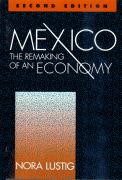Studies in this week’s Hutchins Roundup find that the CPI may overstate inflation by failing to fully reflect the rise of online shopping, early life experiences determine whether FOMC members are hawkish or dovish, and more.
Want to receive the Hutchins Roundup as an email? Sign up here to get it in your inbox every Thursday.
The CPI may overstate inflation by failing to fully reflect the rise of online shopping
Using data on the prices and quantities of over 2 million products sold online from 2014 to 2017, Austan Goolsbee of the University of Chicago and Peter Klenow of Stanford show that online inflation is 1.3 percentage points per year lower than the inflation reported by the Consumer Price Index for the same categories of goods. They also find that more than half of online spending is on goods that didn’t exist in the previous year and nearly a quarter is on goods that won’t be available in the next year, suggesting much more rapid change in product composition than previous estimates based on supermarket scanner data. Failing to reflect the entry of new goods overstates true inflation by an additional 1.5 to 2.5 percentage points per year, they say.
Early life experiences determine whether FOMC members are hawkish or dovish
Using media coverage and business reports to characterize the 130 members of the Federal Open Market Committee (FOMC) from the 1960s to 2015, Klodiana Istrefi of the Banque de France and Michael D. Bordo of Rutgers University explore what makes FOMC members hawkish (more concerned about inflation), dovish (more concerned about output and unemployment), or swingers (someone who switches between the two). Doves are more likely to hold PhDs from schools that attribute economic fluctuations to shifts in demand, they find, while hawks are more likely to hold PhDs from schools that attribute them to shifts in supply. In addition, FOMC members who were younger than 25 at the time of the Great Depression (a time of high unemployment) were more likely to be doves, while those whose formational years coincided with World War I (a time of high inflation) were more likely to be hawks. These results suggest that experiences early in FOMC members’ lives continued to inform their policy stance, the authors argue. FOMC members without a PhD in economics are more likely to swing with the consensus view, rarely casting dissenting votes, they find.
Routinization and offshoring explain why labor force participation rates have declined more in some areas than others
Labor force participation in the United States has declined since the 1990s, but the decline has not been uniform across metropolitan areas. Benjamin Hilgenstock of the Institute of International Finance and Zsóka Kóczán of the International Monetary Fund show that much of the geographic variation in labor force participation can be explained by different exposures to routinization (the extent to which occupations comprise routine tasks) and offshoring. Overall, they find that routinization and offshoring can explain about half the decline in U.S. labor force participation; aging of the population explains the remainder. Declines were typically larger in a state as whole than in its metropolitan areas, suggesting that participation fell by more in rural areas and raising concerns about a widening urban-rural divide, they say.
Chart of the week: House prices have rebounded, and are now above their pre-crisis peak

Quote of the week:
“Despite recent events, central bank independence varies, at least in the choice of means to agreed ends. If the first victim of war is truth, then the second is central bank independence. Variations in independence arise not only from legal but also behavioural sources, such as the timing of the appointment of the central bank head in the political cycle. Most but not all BIS members enjoy substantial independence to pursue agreed goals. War apart, we can recognise two current challenges to central bank independence. First, adaptation of monetary policy to unprecedented conditions has left some central banks with huge domestic asset holdings, including government securities. For example, the Riksbank holds about a quarter of the outstanding Swedish government debt. With the best of will and communication, undoing this could prove delicate. Any government may find it easier to live with a large buyer of its debt than a substantial seller. But domestic assets must be reduced, privileging monetary control,” says Agustín Carstens, General Manager of the Bank for International Settlements.
“Second, financial stability mandates pose challenges to the model of agreed goals and independent means. Such mandates resist the clarity of an inflation target. What is more, financial stability is most often a shared responsibility. Sweden’s Financial Supervisory Authority and National Debt Office both have financial stability tasks. To achieve financial stability, the central bank cannot be the only game in town.”










Commentary
Hutchins Roundup: Inflation and online shopping, life experiences of FOMC members, and more
May 31, 2018